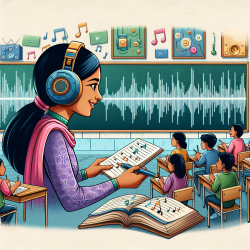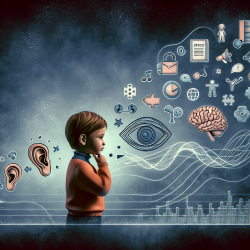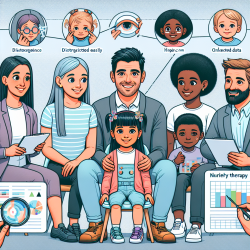The realm of educational audiology is an ever-evolving field that plays a crucial role in supporting the auditory and educational needs of students within the school setting. The Educational Audiology Handbook (1997), authored by Cheryl DeConde Johnson, Peggy V. Benson, and Jane B. Seaton, stands as a seminal work that continues to guide practitioners in this specialized area. This blog post aims to distill key insights from the handbook and suggest ways in which practitioners can enhance their skills by implementing its outcomes or engaging in further research.
The handbook is structured to provide a comprehensive overview of educational audiology practices, emphasizing the importance of collaboration and planning, program effectiveness, and offering an extensive range of appendices with practical resources. For audiologists and speech-language pathologists working within educational settings, this resource offers a blend of theoretical knowledge and practical application that is as relevant today as it was at the time of its publication.
Historical Overview and Current Practices
The Educational Audiology Handbook begins with a historical overview of educational audiology, charting its development and outlining current practices. This section emphasizes the importance of identification, amplification technology, and case management in supporting students with hearing impairments. For practitioners, staying abreast of advancements in amplification technology and case management strategies is vital for providing effective support to students.
Collaboration and Planning
A significant portion of the handbook is dedicated to collaboration and planning, highlighting the necessity of community and family involvement in the educational process. One chapter that stands out discusses inservice planning, offering valuable insights into creating effective professional development opportunities for school staff. Practitioners can enhance their skills by fostering stronger collaborations with teachers, parents, and community members, ensuring a holistic approach to supporting students with hearing impairments.
Program Effectiveness
The section on program effectiveness delves into marketing and program development, providing strategies for demonstrating the value of educational audiology services within schools. Practitioners can improve their skills by engaging in evidence-based practice and research, showcasing the positive impact of their services on student outcomes. This not only helps in securing necessary resources but also in raising awareness of the importance of audiological support in educational settings.
Practical Resources and Appendices
Perhaps the most valuable aspect of the handbook is its extensive appendices, which include federal regulations, position statements, forms for hearing screening, lists of assessment products, and more. These resources are invaluable for practitioners seeking to ensure legal compliance and implement best practices in their services. The availability of these forms on computer disks allows for customization and ease of use in various educational settings.
Central Auditory Processing Disorders
A noteworthy chapter in the handbook provides an overview of central auditory processing disorders, their identification, and remediation. This area remains a significant challenge within educational audiology, and practitioners can benefit from engaging in further research and professional development focused on this topic. Understanding the latest diagnostic criteria and intervention strategies is crucial for effectively supporting students with these disorders.
Sound-Field Amplification
The handbook also touches upon the use of sound-field amplification systems in classrooms, a topic that has gained increased attention in recent years. Practitioners can enhance their skills by becoming knowledgeable about the latest sound-field technology and its application in educational settings. This includes understanding the acoustical challenges of classrooms and how sound-field amplification can mitigate these issues, thereby improving speech perception and academic outcomes for all students.
In conclusion, the Educational Audiology Handbook (1997) remains a cornerstone resource for audiologists and speech-language pathologists working within educational settings. By drawing on its comprehensive insights and practical resources, practitioners can enhance their skills, engage in meaningful research, and ultimately, better serve the students in their care. The handbook's emphasis on collaboration, program effectiveness, and practical application provides a roadmap for excellence in educational audiology practices.
To explore these insights further and to access the wealth of resources provided in the handbook, please follow this link: Educational Audiology Handbook (1997).










